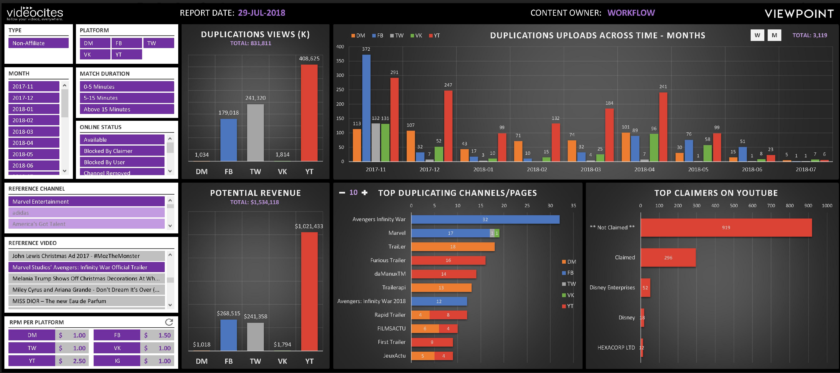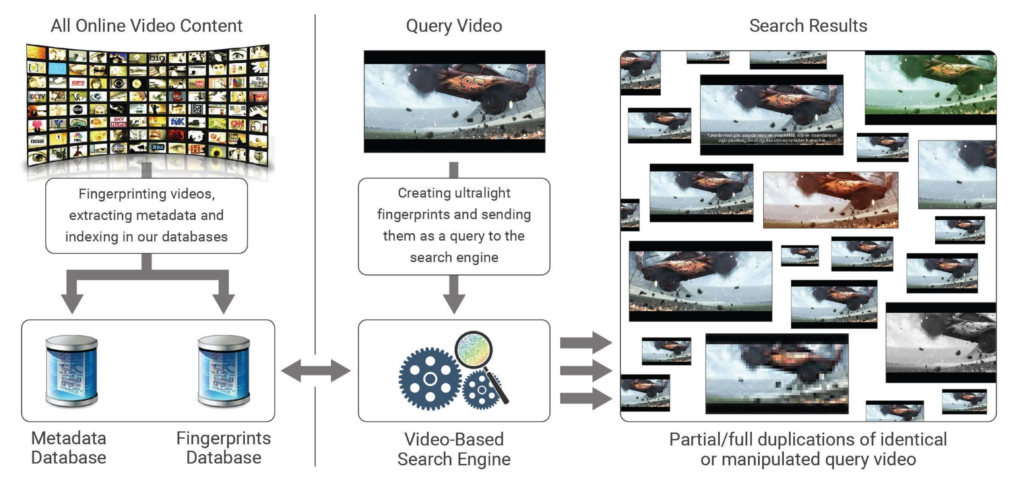Exclusives

Videocites: Tracking Videos, Wherever They Go
Story Highlights
Video-based search is a powerful novel technology that enables a new set of tools for superior video discovery and management.
That’s where Software-as-a-Service (SaaS) firm Videocites sees the future of content discovery, with its AI- and video-based search solutions geared toward opening up new horizons for video content owners: no more tedious manual textual searches, no more browsing through endless, irrelevant results, and no more superficial viewership measurement. Videocites touts its solutions as offering superior content management, distribution control, rights protection, true analytics and knowledge-based decision making.
Eyal Arad, co-founder and CEO of Videocites, spoke with the Media & Entertainment Services Alliance (MESA), about the future of AI-assisted video fingerprinting, how the company approaches online and catalog videos differently for clients, and how Videocites is helping Hollywood tackle piracy.
MESA: What’s the origin story behind Videocites, how did the company come about, and what gap in the M&E space has the company sought to fill?
Arad: Videocites was conceived in the international MBA program of the Israeli Technion (Israel’s leading technological academic institute), when top-notch computer vision scientists and experienced entrepreneurs from the media and video domains joined forces to found a new startup firm. The potential was recognized immediately — a new generation of search engines that would revolutionize the visual media ecosystem by allowing an effective AI-powered video-by-video search. Namely, a search where the query is built from the visual information within the actual frames of the video that you are looking for.
A profound market and technology research revealed that such a search engine can be utilized for numerous applications that will solve painful problems and address unmet needs for all video-related industries. We’ve chosen to initially focus on helping media companies to fight piracy, to increase monetization and to gain true viewership analytics of their content.
We are doing that by providing them with the ability to find full or partial copies of their video content on all social and video platforms worldwide, in an automated and scalable way. An accurate, fast, high-capacity service that didn’t exist until Videocites launched its first products earlier this year. Naturally, our video-based search is fully automated, not reliant on video metadata or audio, and not language dependent.
MESA: How has the use of AI come into play with Videocites portfolio of SaaS products?
 Arad: Videocites is all about AI. In fact, three of the company founders are AI and computer vision top professors at leading international academic institutes. The most evident and critical utilization of AI is within the fingerprinting process. AI is being used in our products to create the world’s smallest yet most efficient fingerprint for each frame, regardless of its original resolution (HD, 4K, 8K, etc.). This fingerprint is the key enabler for our scalable, real-time video search engine.
Arad: Videocites is all about AI. In fact, three of the company founders are AI and computer vision top professors at leading international academic institutes. The most evident and critical utilization of AI is within the fingerprinting process. AI is being used in our products to create the world’s smallest yet most efficient fingerprint for each frame, regardless of its original resolution (HD, 4K, 8K, etc.). This fingerprint is the key enabler for our scalable, real-time video search engine.
In addition, AI is being used to train our algorithms to become immune to any video manipulation that people may use when re-uploading unauthorized copies. Our algorithm is already trained to handle all common manipulations (e.g. mirroring, rotation, color distortions, PIP, etc.) and we continuously retrain it to cope with any new trending video manipulations.
The processes of AI utilization for the fingerprint creation and immunity to manipulations are protected by granted patents and additional trade-secrets.
MESA: How does Videocites online services vs. catalog services differently, what are the different needs in each space for clients?
Arad: Videocites Online services provide video content owners with an overall solution for copies detection, management, monetization, claiming and takedowns throughout all social and video platforms. On top, based on metrics and metadata of the official release and its full/partial copies, our Viewpoint analytics engine provides true viewership measurement, distribution and infringement patterns and other insights for decision makers. These tools also provide information regarding the first uploaders of a copy into the social platforms, used by our customers for “leak detection” or talent acquisition.
As further described below, all online services are automated, scalable and work in high-frequency to claim unauthorized copies before gaining traction and accumulating views.
Videocites Catalog services is a new family of products targeted towards the MAM (Media Asset Management) segment. We adapted our video-based search engine to run inside our customers’ huge internal video catalogs and introduced several new content management capabilities that were not available until today. A toolbox that facilitates automated video database organization and optimization by deduping, cluster analysis and frame-level content comparison. These services save storage costs, search overhead and ensure the integrity of the catalog.
Media companies that started using these products usually own a huge video catalog without a proper index and reliable mechanism to prevent full/partial duplications. Other use-cases include frame-level comparison between videos as well as content originality verification workflow for content licensing and distribution companies.
MESA: What makes Videocites’ ultralight video identification technology unique in this space, what does it do that similar technologies don’t?
Arad: The core advantage of Videocites resides in its novel AI-based fingerprinting process that results in an ultra-lightweight informative video fingerprint. The miniature size of the fingerprint allows us to continuously scale and index all existing and newly uploaded online videos worldwide forever. The richness of the fingerprint, in terms of information, allows us to perform a video-based search with extremely high accuracy and recall on databases with endless amount of records.
Another important quality is the immunity to video manipulations which is embedded within the process and the ability to keep it constantly up-to-date with current and recent manipulations.
Performance, speed and accuracy are key factors in our search engine, which is at the core of all our various products and the main differentiator that allows us to provide a comprehensive and immediate detection of copies at any scale. Unlike watermarking, our technology doesn’t require any post-production procedures, as the video content itself becomes a unique identifier of its own.
MESA: What are some of Videocites’ favorite use case examples, where clients made especially good use of your products?
 Arad: The most powerful use-case, used by many Hollywood studios and media companies, is the need for continuous, automated anti-piracy protection for immediate removal of copies. The impact enhances when the service is provided for premium content owners, as their copies, which are uploaded repeatedly at any given time and gain huge traction immediately, require fast detection and response. The automated search allows continuous tracking for any number of videos at a scale that cannot be handled manually.
Arad: The most powerful use-case, used by many Hollywood studios and media companies, is the need for continuous, automated anti-piracy protection for immediate removal of copies. The impact enhances when the service is provided for premium content owners, as their copies, which are uploaded repeatedly at any given time and gain huge traction immediately, require fast detection and response. The automated search allows continuous tracking for any number of videos at a scale that cannot be handled manually.
Measurements by several clients proved more than 10-times increase in anti-piracy and monetization performance when copies were claimed by Videocites system (compared to other vendors).
Another popular use case relates to our true viewership analytics. For content owners that were used to measure their social footprint based on metrics for their official releases only, the ability to get the “full picture” that includes engagement for all non-official copies is quite amazing. The big data we’ve built around videos and their copies is a gold mine for decision makers in the M&E industry. For the anti-piracy manager it highlights the re-upload patterns as well as copies distribution in time and platforms. Marketing and sales managers can now measure the true engagement and impact of trailers and promos, reveal new audiences and spotlight the most popular part of a video.
Another useful use case originated from the HLS (Homeland Security) market. Videocites was approached by several HLS agencies that wanted to use our search engine to detect harmful content on social and video platforms. Our findings allow them to quickly remove all harmful content, to track the first uploaders, to identify the influencers and to map a distribution network if such exist. Currently, this type of service is being used by different organizations and corporates that wish to detect other sensitive or abusive content.
MESA: What’s next for Videocites, what product improvements might we see on the horizon?
Arad: Videocites’ forthcoming new service is called Discover Live. It allows sports and media companies to track and cease all unauthorized re-broadcastings of live events on platforms that enable live video streaming (Facebook, YouTube, Periscope, etc.). The detection is automated, immune to video manipulations and performed in real-time during the event in order to allow fast takedowns.
Beyond content protection and monetization, we identified a genuine interest in our true analytics products which provide metrics that are very relevant to content owners, ad agencies, PR companies, brands and the creators themselves.
Given the described demand, the exponential growth of our video/metadata index and the diversified video properties that we continuously explore, Videocites is committed to expanding its big data video analytics offering in terms of available information, valuable insights and accessibility.









